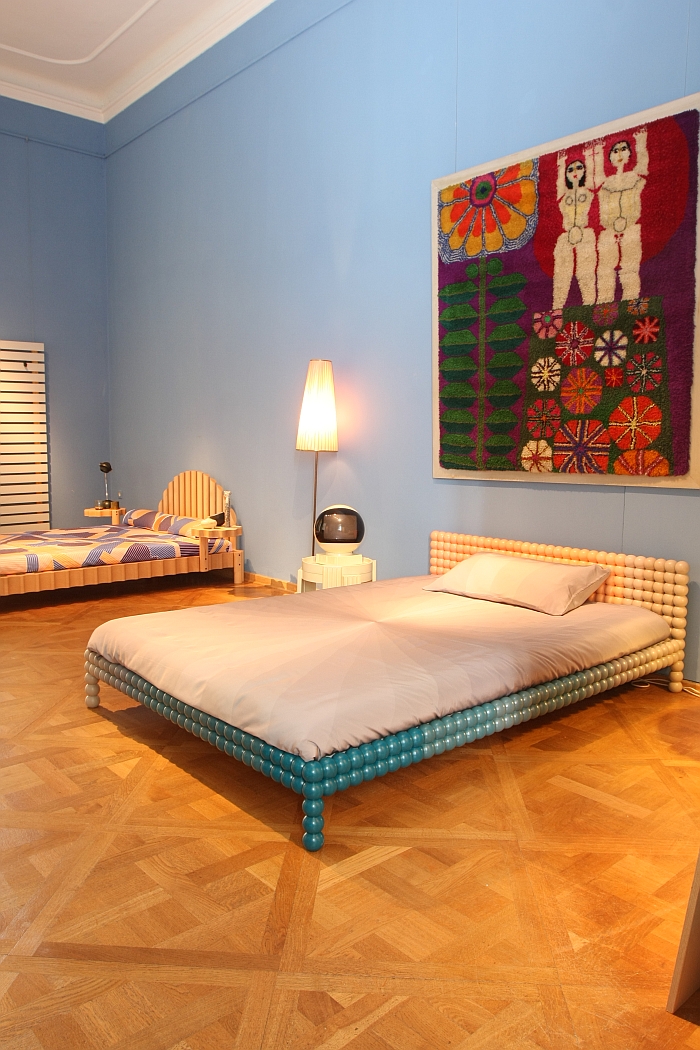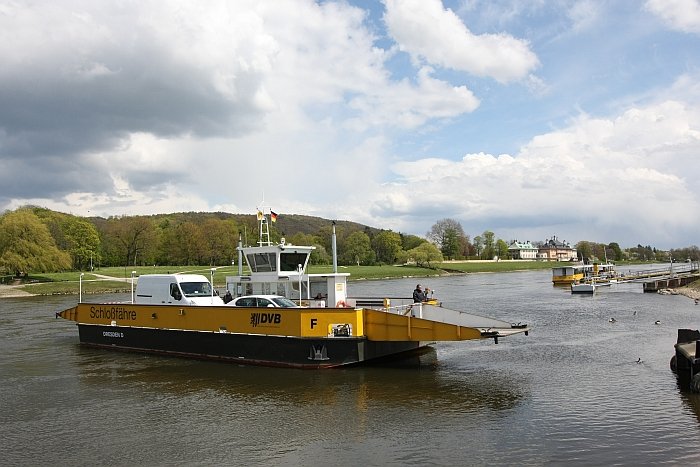Tulga Beyerle, Director of the Kunstgewerbemuseum Dresden, once gave us a piece of advice, the context of which we've long since forgotten, but not the content "only work with people you like"
Much as we have tried to follow Tulga's sage advice, such are the slings and arrows of outrageous fortune under which we suffer, we haven't; unlike, we presume, Tulga who has now gone one step further and transformed the premise into the exhibition Friends + Design.
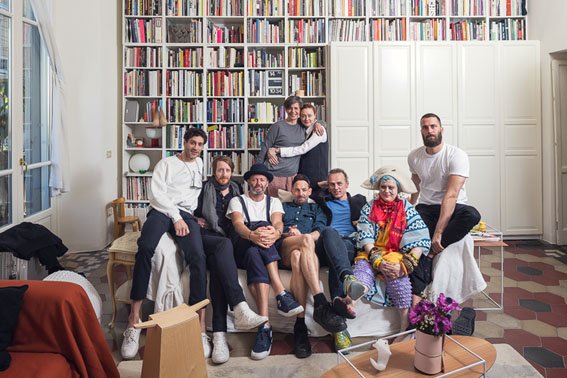
Co-curated by Tulga Beyerle and Maria Cristina Didero Friends + Design began, and as befits such a theme, with a discussion amongst friends, "Tulga and myself have similar backgrounds, share a common vision of life, do similar jobs, have a similar approach to our work, and enjoy a real friendship" explains Maria Cristina Didero, "we have been talking about working together for a while, one day we started discussing friendship as a topic and were convinced that if we got the right people, and by that I mean true friends, that it would work."
To that end seven international designers were asked if they would be interested in contributing to an exhibition, not individually but together with a friend; the "right people" being Tomás Alonso with Mathias Hahn, Bethan Laura Wood with Philippe Malouin and Richard Hutten with Michael Young and Jerszy Seymour. The result is three projects which in addition to representing three different types of design - product, concept, and interior - also represent three different aspects of what constitutes a "friendship", and which in many ways define the depth and potency of such: trust, shared time and experiences, understanding and taking a genuine interest in the other.
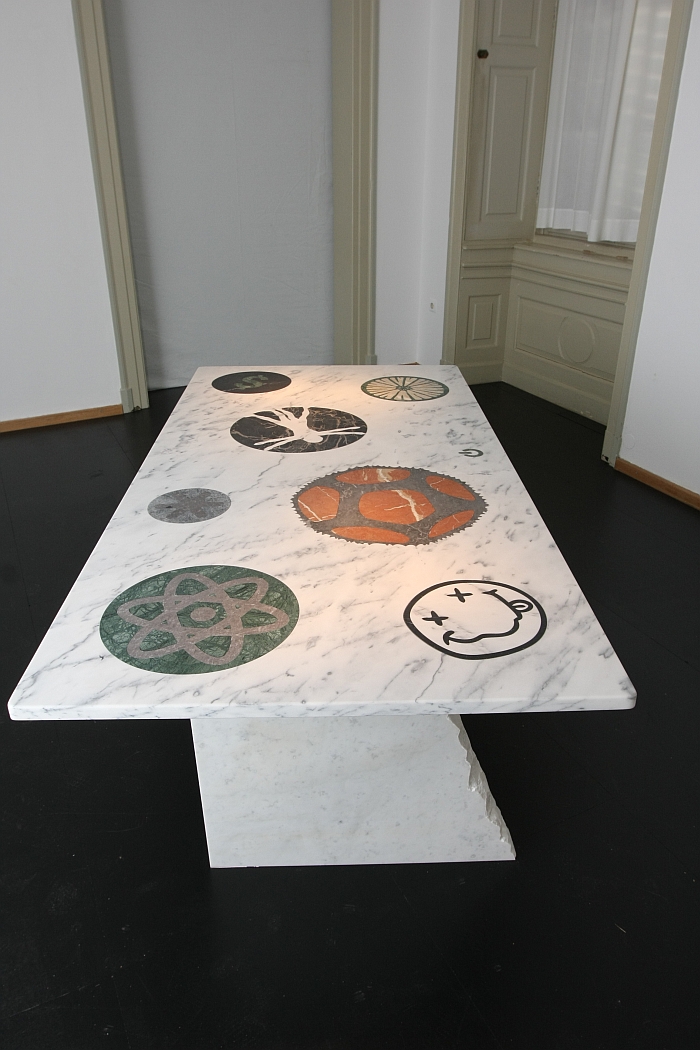
The most instantly accessible of the three projects is without question the inaccessibly named, Youhutseymatic Table by Richard Hutten, Michael Young and Jerszy Seymour. Arising from a brief asking for a joint project the Youhutseymatic Table is a dining table composed of three elements, each designed by one of the triumvirate, and an object which not only reflects the trust that must exist with one's partners to ensure a successful collaboration nor only the trios differing understanding of design and aesthetics, but which also mirrors both what Jerszy refers to as the "anarchic" nature of their friendship and, as Richard explains, the fact that the three "are not friends because we are the same, but because we are different, and one sees the diversity of the individuals in the table." If you will a friendship caught in and embodied by an object, and that, as with the friendship, a one-off, unique piece.
What selling the table says about the friendship is a question we defer to more capable minds.
Largely created, by the designers' own admission, in a bar in Dresden - the three live in different countries and as such can't meet up as easily as the other two pairings - each designer created their element in secret, without reference to or contact with the others, but could they imagine asking one or the other for advice on a project "No!", answer Jerszy and Richard simultaneously, before Jerszy adds the qualifier that that is "largely because our processes are quite different, and so it isn't something that happens." Richard concurs adding that while he may not telephone Jerszy to ask for advice, "I have a team whose opinion I obviously ask, but I am the singer and songwriter and so ultimately I decide."
Or put another way. The design process may be a solo trip, but that doesn't mean others can't, or shouldn't, accompany you.
A metaphor taken to a new level by Tomás Alonso and Mathias Hahn.
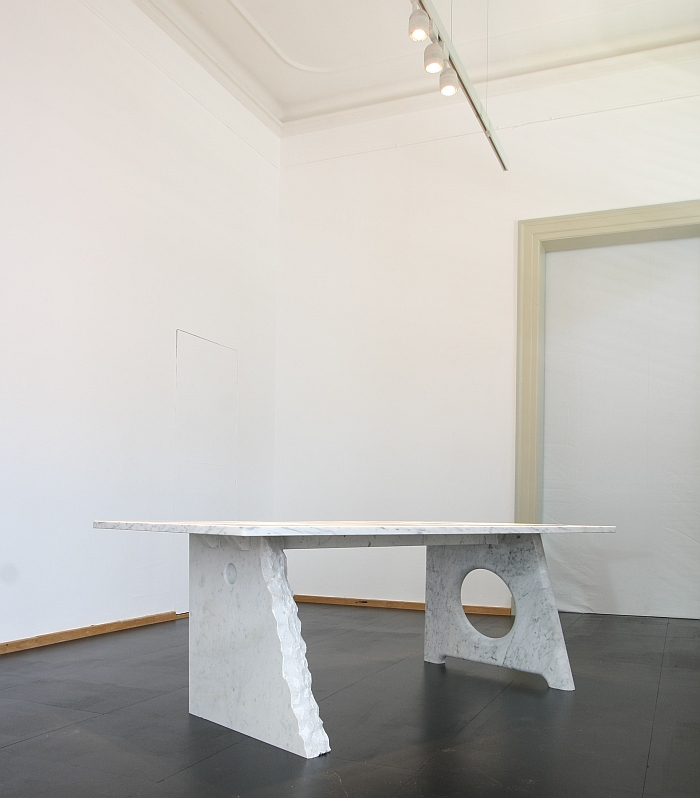
Spending your professional life designing products can leave you weary of products in your private life; therefore when London based designers Tomás Alonso and Mathias Hahn were asked to create a gift for the other, they, in Tomás's words, "decided not to make something", and instead decided to give one another time, or perhaps better put, time together and shared experiences in the form of a road trip from London to Dresden. Being English based designers that, obviously, meant a road trip in a Mini Cooper. And being product designers meant a road trip involving visits to factories and workshops along the way - factories and workshops large, small, high-tech, traditionally analogue - and thus became in addition to Tomás and Mathias's individual memories and impressions, a joint experience documented in a video of the trip which can be viewed in the exhibition and a collection of items from the places visited. Or at least it will be. When we were there the pair were still setting up: as with all good road trips Tomás and Mathias's taking longer than planned.
Of the three projects The Trip perhaps best focusses attention on one of the more interesting aspects of Friends + Design, namely that the designers involved all, generally, work alone, and not only that they generally work alone but as Philippe Malouin notes, "when you've got your own design studio you get used to designing for yourself", the invitation from Tulga + Maria being thus for the designers as much a good exercise in getting away from this solo habit as it was about dealing with the brief per se.
Does however mean cooperating with and finding a joint approach and objective with someone who isn't an abstract client or supplier, but a friend; was there, we ask, no apprehension on the part of the curators that it might all go horribly wrong, that the designers may have over hastily accepted the brief without considering the full consequences, and that it might ultimately test the friendships more than was healthy?
"No, we were never worried", answers Maria without hesitation, "because we knew that the designers involved are real friends. In many ways the project is exactly about challenging friends who normally work separately to spend time together and to work together, so yes one could say the brief was maybe a little pushy, but real friendships are robust, real friends can climb mountains!"
That as may be, but can real friends survive a five day road trip in an old mini cooper?
"The car was so loud that we couldn't really talk and so most of the time we were minding our own business", laughs Tomás Alonso, and thereby also providing a nice tip for any other friends planning a longer road trip.
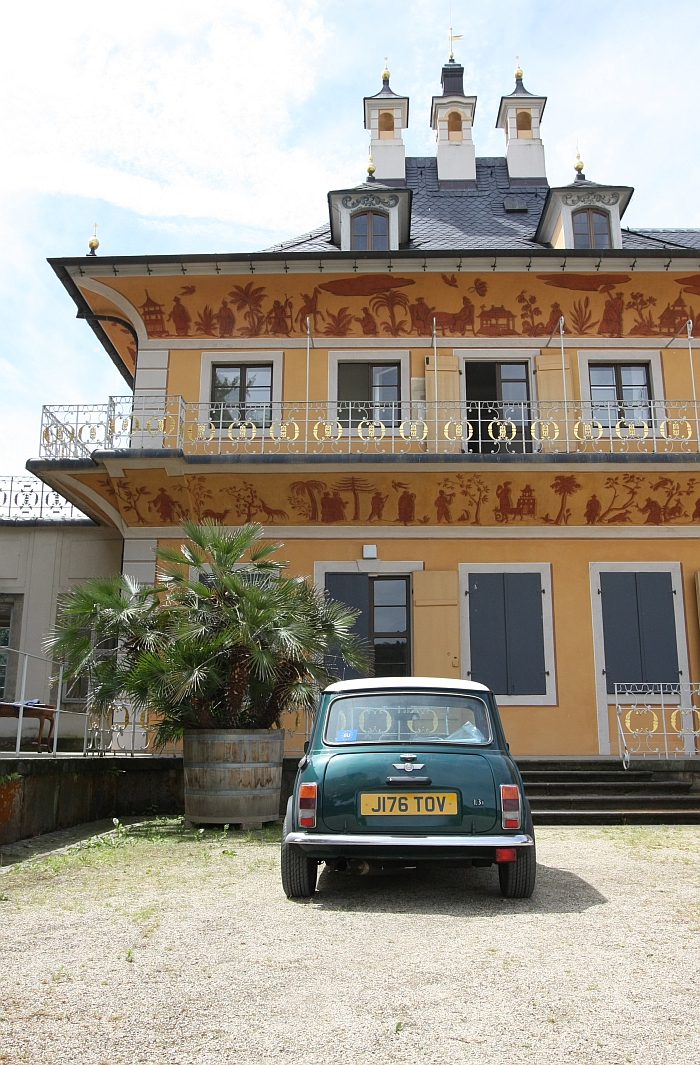
Whereas designers do travel in a physical, geographic sense, not least in context of the innate annual spring migration to the watering holes of Milan, design journeys tend to be more in terms of style, philosophy, materials; and where the paths of two travellers cross, interaction is possible, exchange enabled, fusion can occur. Where the design paths of Bethan Laura Wood and Philippe Malouin cross fission is arguably more likely than fusion, for as Philippe reflects on the pair's characters, "I guess I'm minimal and Bethan is maximal"
Asked by Tulga and Maria to create an object for the other the decadently extravagant Bethan and the decadently reserved Philippe decided that they should both create the same object, and that it should be one which not only came from the giver but which also referenced the receiver.
The subsequent decision for a bed and bed linen was largely influenced by the ideas of privacy, intimacy and seclusion associated with beds and bedrooms, your bed being the one place where you can be yourself without fear or intimidation. Each bed is accompanied in the exhibition by objects selected by Philippe and Bethan from the Kunstgewerbemuseum's collection and thus presented in context of a "real" scenography, a personal, private space which rather than reflecting the impression either Philippe or Bethan has/may have of themselves, reflects, almost caricatures in the sense of exaggerating and highlighting, but also in terms of poking light hearted fun at, elements Bethan and Philippe recognise, understand and for all appreciate in the other's character and work.
Something which is, logically, only possible when you understand and appreciate the other's character and work.
And something which is a fusion, and not the feared fission.
On account of the polarity of their styles it is highly unlikely that Philippe and Bethan would ever find themselves as direct "competitors", similarly Jerszy Seymour, Michael Young and Richard Hutten all have their own approach, their own style and thus their own market(s). The situation is somewhat more complicated with Tomás Alonso and Mathias Hahn. And for all Tomás Alonso, Mathias Hahn and their extended circle of friends. Tomás and Mathias studied together at the Royal College of Art London in the early 2000s and upon graduating in 2006 moved into a shared studio complex alongside 6 former RCA colleagues. New arrivals over the intervening decade mean that the complex is currently home to 12 befriended design studios, 12 befriended design studios who, more or less, generally, work in similar areas and occasionally for similar, identical, clients. Is there therefore a sense of competition amongst friends?
"No, not really", answers Tomás reflectively, "I can think of a couple of, lets say, negative occasions, but nothing serious. And I think if it was a problem we wouldn't all still be sharing a space after ten years. We all somehow find ways to create our own space without getting in each others way"
A situation which implies a mutual respect. Not only a very important element of friendships but something very present in the three projects presented at Friends + Design.
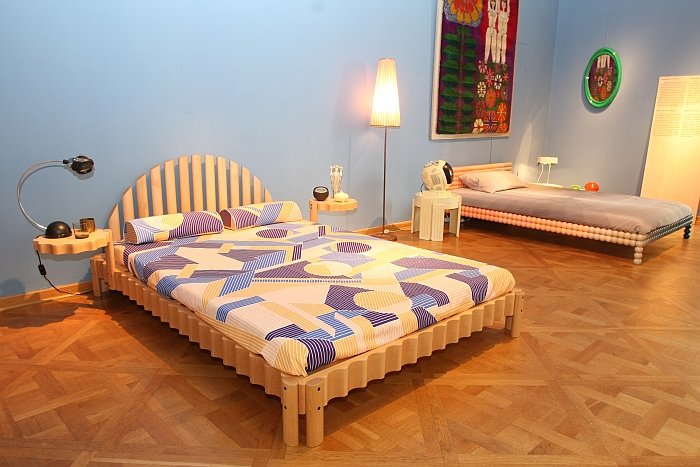
That friends can successfully design together isn't a particularly earth shattering conclusion; historical and contemporary design being as it is awash with excellent examples of such. However such co-operations are concious co-operations, are what the designers want and how they feel comfortable. Friends + Design in contrast sought and seeks to explore what happens when those not familiar with working with someone are forced to. And when that someone is a friend.
Consequently as an exhibition Friends + Design is less about the results per se, interesting as they are, and much more about on the one hand what they tell us about the seven protagonists' approach to their work and their understanding of design and on the other an exploration of friendship, of how and why friendships work. And from that we learn above all: vive la différence!
In addition Friends + Design also very neatly explains what a design museum can be and how a design museum can make contemporary design relevant and accessible. A state of affairs greatly helped by the decision to base the exhibition's "identity" around the TV series "Friends"; a decision which brings a very nice, pleasingly irreverent, almost inappropriate, to be honest bordering on the amoral, lightness to proceedings, and which makes approaching the exhibition less about the "Design" component and more about the "Friends". Even if it does mean you'll be humming "that" Rembrandts song for months to come. And wondering if anyone ever told the participating designers that life was gonna be this way? If they're broke? Are their lives a joke? Do they feel stuck in second gear? Has it been their day, their week, their month or even their year?
An exhibition with a lot more depth than breadth Friends + Design arguably isn't worth a trip to the Dresden Kunstgewerbemuseum on its own; but as an extension to what the Dresden Kunstgewerbemuseum offers it is certainly a further convincing argument for making a trip along the Elbe this summer. And naturally across the Elbe with the Schlossfähre ferry.
One possible explanation as to why Friends + Design works so well is that it is built not only on the friendship that exists between the curators, but also on that between the selected designers and the curators, friendships which in many cases go back years, involve numerous co-operations in as many contexts and which are probably best summed up by Jerszy Seymour's comments that the designers knew they could "trust" the curators to successfully manage and organise the project. As such the exhibition is built on trust, understanding, shared experiences. And thus, and perhaps most importantly, working with people you like.
Friends + Design runs at the Kunstgewerbemuseum, Schloss Pillnitz, Wasserpalais, August-Böckstiegel-Straße 2, 01326 Dresden until Tuesday November 1st.
Full details, including information on the parallel running - surely rolling? - exhibition Self-Propelled. Or how the bicycle moves us can be found at www.skd.museum
